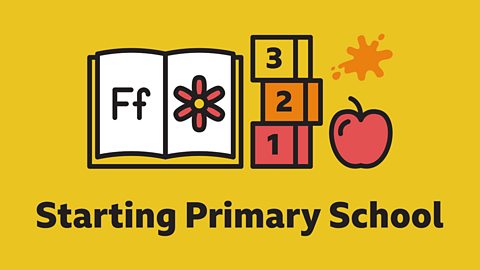By Tara Parker, Senior Early Years Programme Manager at the National Literacy Trust
Do you remember your favourite books as a child – you know, the ones you read time and time again and knew practically every word of? Maybe you were lucky enough to regularly read stories with your family and had someone to read you a bedtime story before you drifted off to sleep? You won’t have known at the time, but those experiences were building vital building blocks for your future.
Reading, being read to, and sharing books in the home helps to build a child’s vocabulary and understanding of the world. Research shows children who start school with good vocabulary and communication skills make friends more easily, have fewer behavioural issues and are more likely to do well academically. A strong, early foundation in language has even been linked to better mental health as children get older.
Reading with your child, or encouraging your child to read independently for just ten minutes each day can make all the difference. Here are some tips to help children of all ages to enjoy reading and to get reading more often.
1. Take breaks while reading
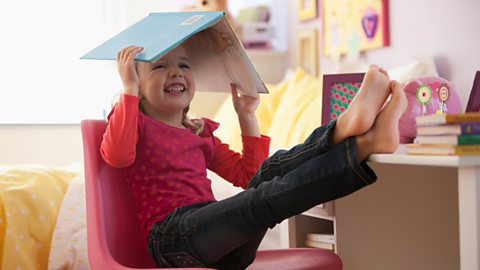 Image source, GETTY IMAGES
Image source, GETTY IMAGESYour child doesn’t have to read an entire book in one go! Any time spent sharing or talking about a book is beneficial, even if it’s just a couple of minutes at a time. If they have to close the book early because it’s time for tea, or they’re just losing interest, that’s okay. Reading can take a lot of mental energy and taking breaks gives children a chance to slowly build the mental stamina they need, so that soon they will be able to read for longer stretches of time.
2. Build reading into your child's daily routine
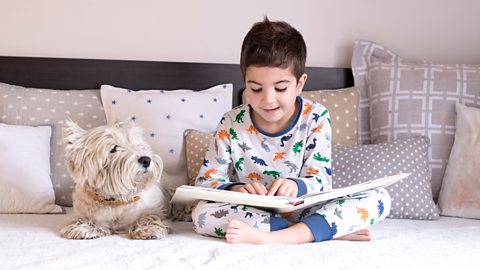 Image source, GETTY IMAGES
Image source, GETTY IMAGESFind a regular time for reading in your child’s day, so that they can begin to expect it as part of their routine. This can be any time of day. Some children enjoy reading before bed, but others can just be too exhausted at night. It might be better for some children to read just after dinner, or in the morning after breakfast, when they have more energy. You can encourage your child to track their reading using a weekly reading chart. This will help them celebrate their progress.
Also, create a cosy place in your home that you can call the ‘reading corner’, which can be any size you like. Let your child decorate it with their favourite books and soft toys, so they look forward to going there to read. When you can, try to make sure they see you reading, or read with them, so they know adults read too!
3. Encourage your child to follow their interests
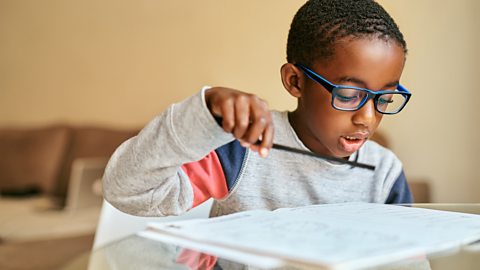 Image source, GETTY IMAGES
Image source, GETTY IMAGESLet your young children choose the books they read. You can do this by keeping books on a shelf they have regular access to, or presenting them with two to three books and letting them choose. Let them read the same book, or same genre of reading material (such as football magazines!), over and over again. Repetition will help younger children learn words and understand how language is structured. Following their interests is also the best way to keep them engaged and make reading fun, which will make them more likely to want to read more widely going forward.
Finally, if you are reading the book to them, let them turn the pages, skip pages, return to pages and let them interrupt you – even if it feels like they are getting off track. Talking about the book helps them makes sense of what they are reading.
4. Use technology together
 Image source, GETTY IMAGES
Image source, GETTY IMAGESNational Literacy Trust research has found that, when used appropriately and with an adult, technology can provide an important route into reading for many children, including those in the early years, and boys. Feel free, at times, to use your mobile phones, tablets, computers, laptops and other devices to engage your child in reading and activities that can help them build their vocabulary. This can include a multitude of activities, such as:
• Telling a story using pictures on your phone
• Video calling friends and relatives to engage children in conversation
• Using YouTube to find the lyrics to nursery rhymes
• Using apps to read e-books or listen to audiobooks (many organisations are providing them for free during school closures)
These activities, or similar ones, can be used with children of all ages. Young children will learn best when doing these activities alongside you, and you can help your older child by showing them how to use the technology appropriately. All children benefit from seeing and hearing their parents and carers do things. This helps them understand how to do it themselves. Technology is also most effective when it is linked to other things your child is learning, and when it is balanced with other learning activities.
5. Encourage your child to be the author
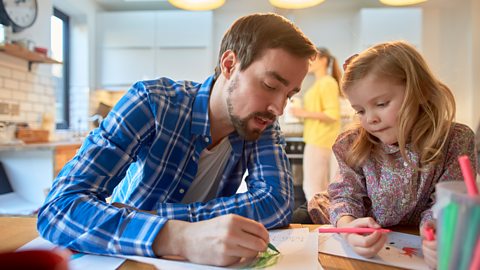 Image source, GETTY IMAGES
Image source, GETTY IMAGESBuild writing and drawing into your routine at home by helping your child tell a story. When telling stories, children are practising important language skills, such as past and future tense and transition words. You can model this behaviour, by telling them stories. Children love to hear stories about your childhood or other experiences, and it gives them inspiration for telling their own stories.
Then, you can show them how to write or draw their story. They can draw it through pictures, or type it on a computer, depending on their age. For some children, becoming the author is the best way to activate their imagination and their interest in stories. Through their writing, you can learn about some of their interests and find books to match!
6. Have a chat
 Image source, GETTY IMAGES
Image source, GETTY IMAGESResearch shows that children who engage regularly in conversational turn-taking with an adult learn faster when they’re older. Taking every opportunity to chat with your child will help them build the language and vocabulary skills they need for school. Let your child pick the topic they want to talk about, listen to them, ask questions and share your ideas. You can use daily activities to spark conversation with your child, such as getting dressed or making a meal. You’ll learn a lot about your child’s interests!
7. Share stories using the pictures in the book instead of the words
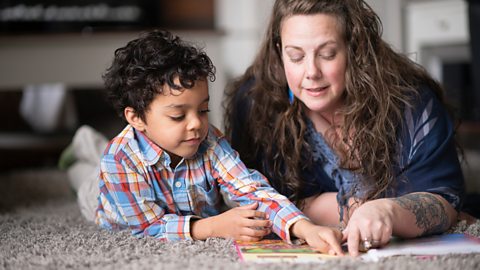 Image source, GETTY IMAGES
Image source, GETTY IMAGESPictures are a great support for young and struggling readers. They are enjoyable to look at, capture children’s attention and help them make sense of what they are reading. If your child is unsure about reading all the words in the book, they can start by telling a story using the pictures. Ask your child to describe the pictures they see, ask questions about what the characters are doing and why they might be doing it, and see if they can guess what might happen next. By the end of the book, you may find they have created a whole new and exciting tale!
8. Play with letters, sounds and words
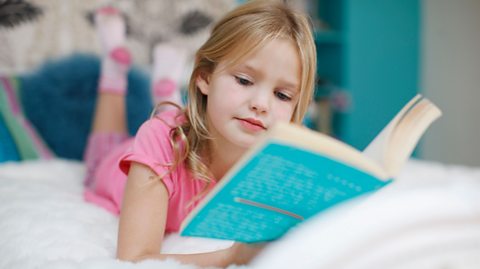 Image source, Getty Images
Image source, Getty ImagesEngage children in games and activities that help them learn new words. For older children, these could be crossword puzzles, word searches or word hunts. They can cut out words in magazines related to a particular theme to create a word map. For younger children, focus on playing with letters and sounds. You can use Play-Doh or alphabet magnets.
You can make sound soup by finding items around the house that begin with a particular sound and mixing them in a bowl together. All of these activities build your child’s vocabulary and understanding of how words work. This will help them understand words when reading books, making reading easier and more enjoyable!
Tara Parker is Senior Programme Manager for Early Years at the National Literacy Trust, where she supports families to engage in their young child’s communication and language development.
For further information check out the rest of Starting Primary School which has lots of ways to help prepare children for different aspects of school life – both practically and emotionally.
Parents' Toolkit
Fun activities, real-life stories, wellbeing support and loads of helpful advice - we're here for you and your child.
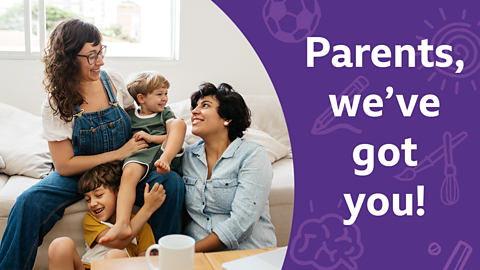
Bud's Number Garden
Join Bud the bee, explore his magical garden and practise recognising numbers, counting, sequencing and much more!
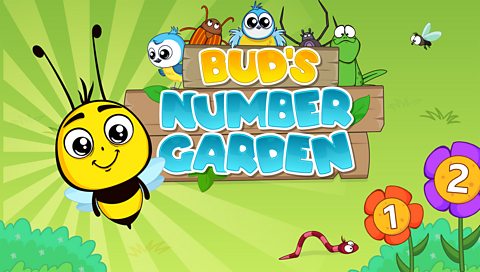
More Starting Primary School videos and articles
Head to our homepage to help you and your child prepare for starting primary school and thrive in school life.
